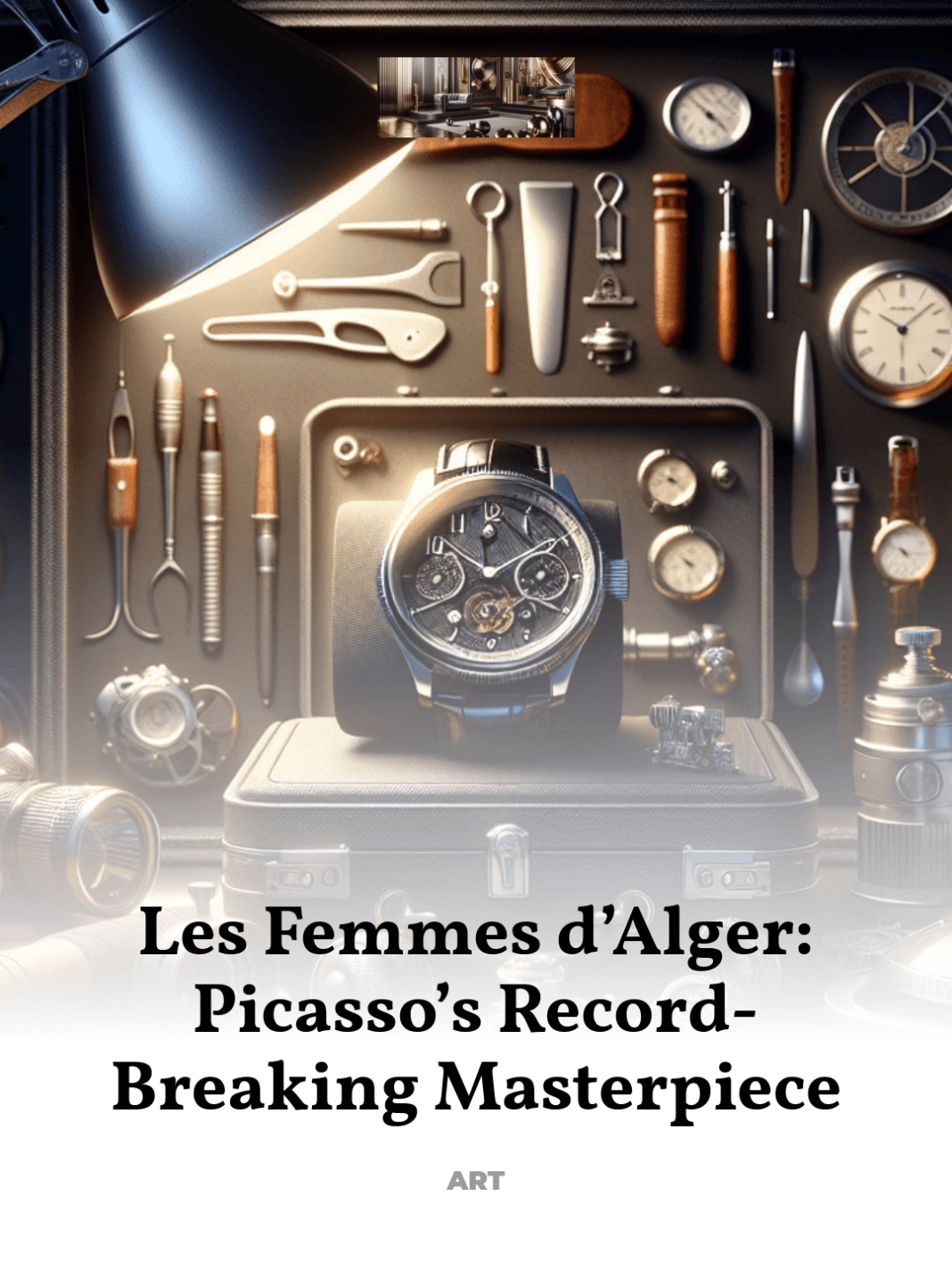How this Cubist Reinterpretation of Delacroix Stunned the Art Market
Les Femmes d’Alger by Pablo Picasso is not just a painting; it is a symphony of color, form, and historical narrative that bridges the gap between two artistic epochs. This masterpiece, which reinterprets Eugène Delacroix’s 1834 work, stands as a testament to Picasso’s genius in the cubist movement and his homage to the orientalist theme.
- Historical Context and Inspiration
- Cubist Interpretation and Artistic Nuances
- Impact on Modern Art and Cultural Significance
- Stunning the Art Market: Auction and Legacy
- Continuing Influence in Contemporary Art and Culture
Historical Context and Inspiration
The journey of Les Femmes d’Alger begins in the mid-19th century with Eugène Delacroix, who was profoundly influenced by his visit to North Africa. Delacroix’s original work, depicting women in an Algerian harem, was revolutionary in its portrayal of the exotic and unfamiliar, capturing the European fascination with Orientalist themes. Fast forward to 1954, Pablo Picasso, inspired by Delacroix, embarked on a series of fifteen paintings and numerous drawings collectively known as Les Femmes d’Alger. This series was not only a tribute to Delacroix but also a personal homage to Henri Matisse, Picasso’s friend, and rival, who had recently passed away and was known for his love of Orientalist aesthetics.
Cubist Interpretation and Artistic Nuances
Picasso’s reinterpretation of Delacroix’s work through the lens of Cubism was a bold departure from the original. Where Delacroix offered lush realism, Picasso dismantled and reassembled the forms into abstract, geometric shapes. This transformation is evident in the version “O”, the final and most celebrated of the series, where the figures are fragmented and reconstructed in a complex tableau of sharp angles and interlocking planes. The use of vibrant colors juxtaposed with muted tones evokes a sense of depth and emotion, making the painting resonate with an energy that is distinctly modern yet reflective of its Orientalist roots.
Impact on Modern Art and Cultural Significance
The significance of Les Femmes d’Alger extends beyond its visual appeal, serving as a pivotal piece in the narrative of 20th-century art. It exemplifies how Picasso could take inspiration from the past yet create something radically new and influential. The series not only pushed the boundaries of Cubism but also challenged the conventions of representation, gender, and cultural portrayal in art. Moreover, it highlighted the ongoing dialogue between Western artists and the broader, more diverse cultural landscapes they engaged with, thus enriching the discourse around colonialism, orientalism, and exoticism.
Stunning the Art Market: Auction and Legacy
In May 2015, version “O” of Les Femmes d’Alger set a historic record at Christie’s, selling for $179.4 million, making it one of the most expensive paintings ever sold at auction at that time. This sale not only underscored Picasso’s enduring relevance in the art world but also reflected the growing market appreciation for masterpieces with rich cultural narratives and groundbreaking artistic techniques. The auction itself was a spectacle of luxury and exclusivity, attracting elite collectors and connoisseurs who recognized the painting’s monumental artistic and historical value.
Continuing Influence in Contemporary Art and Culture
The legacy of Les Femmes d’Alger continues to resonate in contemporary art and culture. It serves as a source of inspiration for modern artists exploring themes of cultural identity, historical reinterpretation, and the breaking of artistic boundaries. The painting’s influence is also evident in discussions about the representation of women and non-Western cultures in art, prompting a reevaluation of traditional narratives and fostering a deeper appreciation for the complexity of cultural interconnections.
For further exploration of Picasso’s work and his impact on modern art, esteemed institutions such as the Museum of Modern Art in New York provide extensive collections and insightful exhibitions. Visit Christie’s.
In conclusion, Les Femmes d’Alger by Pablo Picasso is not merely a painting; it is a landmark in art history that continues to captivate and inspire. Through its complex interplay of history, culture, and innovation, it remains a profound statement on the power of art to transcend time and place, challenging and enchanting viewers and collectors alike.



